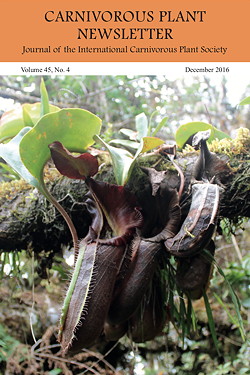International Carnivorous Plant Society
Carnivorous Plant Newsletter Archive
The search for all of the victims and all of the killers
Douglas W. Darnowski
Carniv. Pl. Newslett. 45(4):140-143
Published 17 November 2016
https://doi.org/10.55360/cpn454.dd277
Summary
Carnivorous plants often claim the name 'insectivorous' for the simple reason that most carnivorous traps usually contain insects, and, even when not insects, trapped prey are usually close cousins of the insects from within the Phylum Arthropoda. An example of this is when bladderworts (Utricularia spp.; Lentibulariaceae) trap crustaceans such as amphipods and copepods, which are arthropods, like insects. Indeed, Darwin's book on the carnivorous plants recognizes this fact with its title Insectivorous Plants. Splitting open a pitcher from Sarracenia leucophylla, as an example, usually reveals one chitinous arthropod exoskeleton after another.
Keywords: seaweed, algae, brackish, marine, prey
Article Citation
Douglas W. Darnowski. 2016. The search for all of the victims and all of the killers. Carniv. Pl. Newslett. 45(4):140-143. https://doi.org/10.55360/cpn454.dd277
Page views: 918
©2025 International Carnivorous Plant Society
www.carnivorousplants.org
This page is maintained by John Brittnacher.
Please contact us at our membership website, icps.clubexpress.com.
Privacy: The Carnivorous Plant Newsletter Archive website does not track users.

